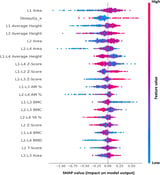AI-Powered Study Links Bone Health to Early Diabetes Detection, Promising Breakthrough in Prevention
July 17, 2025
The study employed machine learning models such as random forest, LightGBM, and deep learning, with LightGBM achieving the highest AUROC of 96%, demonstrating the power of AI in this domain.
This research focused on analyzing DXA bone measurements in Qatari adults to assess how bone health metrics relate to diabetes risk prediction.
Findings revealed that diabetic patients, especially males aged 20-40 and 56-69, showed significant increases in bone mineral density (BMD) and bone mineral content (BMC) across various skeletal regions.
Given that over 537 million adults worldwide are affected by type 2 diabetes, a number expected to rise to 693 million by 2045, early detection strategies are more crucial than ever.
The study also identified clinical factors such as age and HbA1c levels as important indicators, with older individuals and those with higher HbA1c showing increased risk of developing diabetes.
Research indicates that DXA-derived bone composition measures could serve as valuable biomarkers for predicting diabetes, highlighting a complex link between bone health and metabolic disorders.
Among these models, random forest also performed strongly, with an AUROC of 93%, outperforming other predictive techniques.
A groundbreaking longitudinal study has utilized AI techniques to explore the relationship between bone health parameters and the onset of diabetes, marking a significant step toward improved early detection and prevention.
While DXA is traditionally used to assess bone mineral density, emerging evidence suggests it can also provide insights into body composition and potential metabolic risk factors.
Summary based on 1 source
